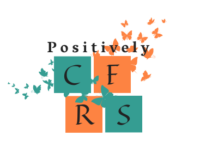When I was in high school, a good friend introduced me to the works of Hieronymus Bosch. I was fascinated! I’ve always had a penchant for things that were different than what everyone else liked at the time – a strong streak of individualism in a world that praised mostly conformity. Bosch’s paintings fit that bill perfectly. They were weird and odd, but every time you look at them, you can find something new. Plus, his name was really cool! I’ve also always liked things with lots of little parts within the whole. Think of Richard Scary books (remember those??) with all their activity and small, detailed drawings – looking for Lowly Worm was one of my favorites!
As one might expect from an artist in the mid to late 1400’s, much of Bosch’s work is based on religious narratives and concepts as they relate to man and his role and moral failings. The subject wasn’t necessarily what drew me to it, but the strange interpretation, fine detail at such complexity, and willingness to approach the taboos of the time. His art evoked emotion!
As you observe the art of Hieronymus Bosch, think about life in the 1400’s – economically, politically, religiously, and just what it took to survive every day life. A failed crop was the difference between life and death. People survived the Black Death and the Hundred Years’ War and the Church was battling for the hearts and minds of the common people. There was a huge disparity between the ‘haves’ and the ‘have nots’. Fear and survival were the primary motivators in a mostly agrarian society. Corruption, greed, and debauchery were the primary motivators for most of the rest.
- Religion in the Middle Ages – Click HERE
- Life in 14th Century England – Click HERE
- Medieval Life in Pictures – Click HERE
From the website, Hieronymus-Bosch.org, a description of his work:
(c. 1450 – August 9, 1516)
Hieronymus Bosch, born Jeroen Anthonissen van Aken (c. 1450 – August 9, 1516) was an Early Netherlandish painter of the fifteenth and sixteenth centuries. Many of his works depict sin and human moral failings.
Bosch used images of demons, half-human animals and machines to evoke fear and confusion to portray the evil of man.
His works contain complex, highly original, imaginative, and dense use of symbolic figures and iconography, some of which was obscure even in his own time. (From Wikipedia)
https://www.hieronymus-bosch.org/
Some keys works of Hieronymus Bosch:
As you look at Bosch’s works, what do you notice in the details? Does it evoke any emotions? Are you able to relate to how the people in the late 1400’s would have received his art?
We’d love for you to follow us over on Insta at @cfrsart and @positivelycfrs – Thank you!!
Make it a great day!!
It’s CFRS, Positively!









